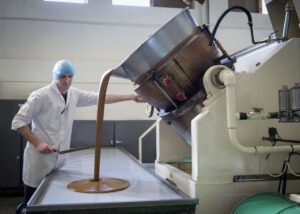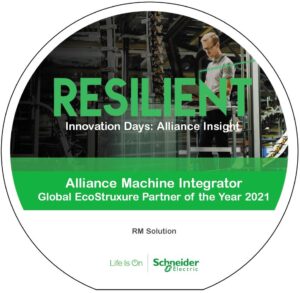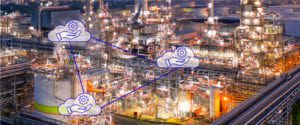Across factories worldwide, the move to smart manufacturing and the related practice of remote monitoring is taking hold. This also applies to such a component of any production as a system of storage facilities, in which the accumulation, storage and distribution of finished products is carried out. The global pandemic accelerated the remote monitoring trend as many plant floor workers were asked to spend less time on-site to reduce the risk of Covid-19 transmission. Evolving marketplace conditions are prompting industrial businesses to invest in remote management to enable production agility, to ensure better machine availability, and to foster rapid and less costly actions that address maintenance and operation-related events.

At RM Solution, a Russia-based Schneider Electric Alliance Partner specializing in systems integration and process control automation, many of our customers, particularly in wholesale and retail, as well as food and beverage industry, ask us to deploy dispatching and monitoring systems that improve their control of operations. Through automation of routing and scheduling processes along with repair and maintenance works, our smart manufacturing solutions provide clients with simpler, more efficient ways of coordinating recipes and boosting outputs. Handling these tasks manually takes up time and often results in costly errors.
Remote monitoring accelerates smart manufacturing safety, cost, and uptime benefits
Our clients see business value in applying remote monitoring technologies to achieve three important goals: cost reduction, enhanced worker safety, and improved reliability of machines through advanced maintenance techniques.
Remote monitoring lowers the cost of operations
By remotely monitoring plant floor equipment load in real-time, clients can better plan production schedules and can optimize equipment operation through analysis of the accumulated performance data. When using products like Schneider Electric’s EcoStruxure Machine SCADA Expert, industrial PC devices, acting as “thin clients” (computers that run from resources stored on a central server instead of a localized hard drive), can access the cloud and Internet of Things (IoT) devices, and display consolidated data on easy-to-interpret dashboards via a web browser. Expensive experts no longer must be brought in as frequently to perform in-depth on-site analyses, and this helps to reduce operational costs.
Remote monitoring improves worker safety
Automated systems that can be accessed remotely also increase the worker safety level, particularly when abnormal events or emergencies occur. For instance, if flammable gases or hazardous liquids are detected by on-site control instrumentation, remote safety experts can immediately engage automatic shut-off. Or, if a fire occurs, signals from fire protection systems can be detected remotely and electrical equipment that may be feeding the sparks to the combustible materials can be remotely shut off, thereby minimizing the spread of the fire. Machine operators can also be notified in real-time via instant messaging (SMS) or email about emergency situations occurring in their machines and take prompt measures to safeguard the life and health of nearby workers.
Remote monitoring supports advanced maintenance
Automated dispatching software systems also allow our clients to remotely monitor the activities of service personnel. Instances of preventive maintenance and repairs are tracked by our systems so that data can be analyzed to optimize performance while minimizing costs. In the domain of chilled storage of frozen food products, for instance, round-the-clock monitoring of on-premises temperature and humidity provides real-time notifications via instant messaging and emails regarding malfunctions and situations that critically affect the cold storage process. Such monitoring systems increase customer confidence when they deploy state-of-the-art cold storage systems for frozen or chilled food product lines. Remote experts, from anywhere in the world, can connect to the equipment that is experiencing a problem. They can then remotely diagnose the problem by checking the equipment performance data. Then, depending on the issue identified, they can determine the fastest way to implement a fix.
For more information about smart manufacturing
In dynamic industries such as food and beverage, flexible and scalable machine control is needed to allow for an easy upgrade to higher performance platforms for improved efficiency as marketplace conditions change. The ability to now control operations remotely is an important aspect of the upgrade process. We support our customers who face these challenges by integrating more powerful PLCs into machines to enable easy control of devices such as drives, motion conveyors, and remote I/O.
To learn more about how remote monitoring can improve worker safety, uptime, and cost control of your plant, visit the RM Solution and Schneider Electric web pages.



